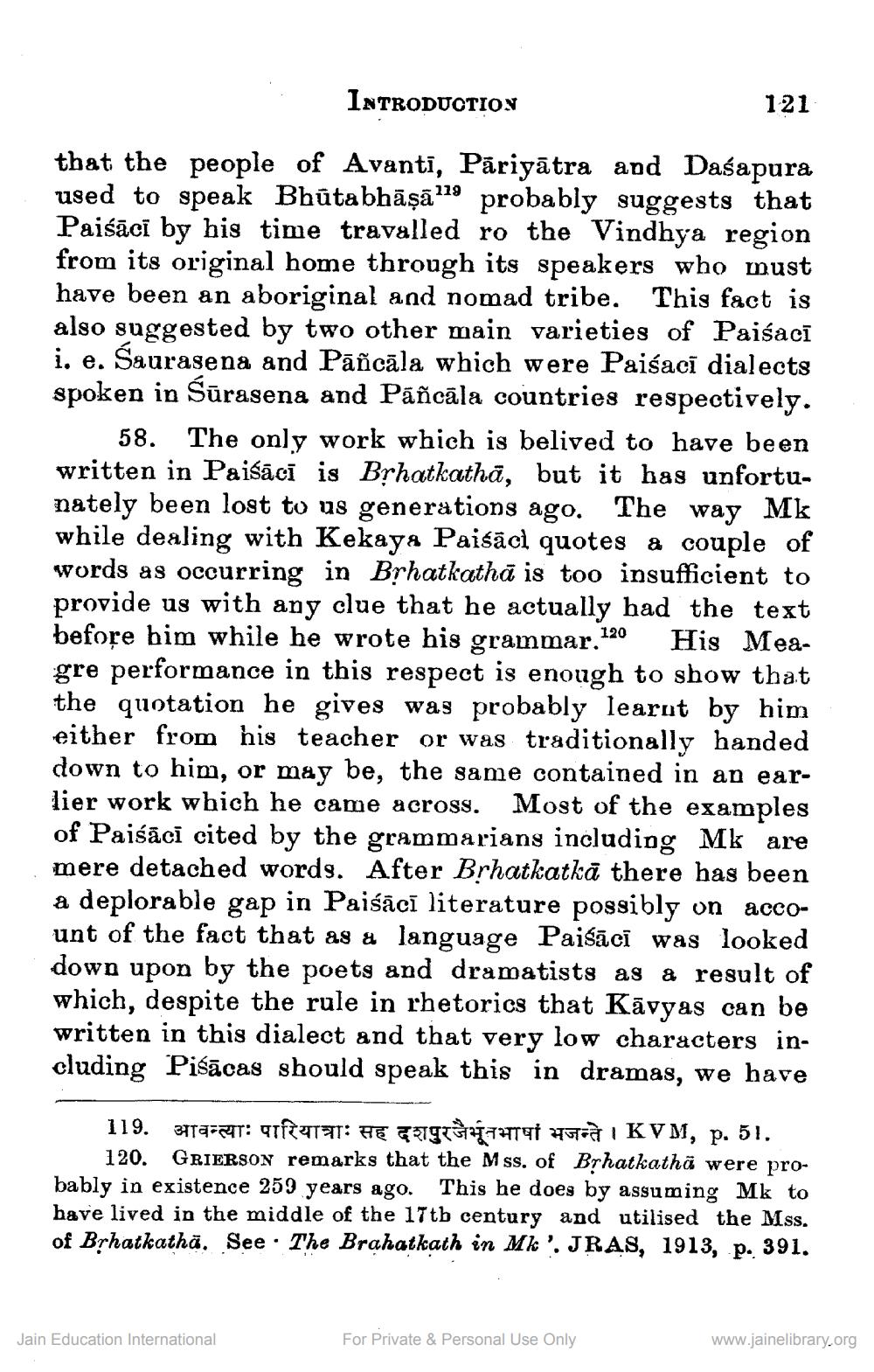________________
INTRODUCTION
121
that the people of Avanti, Păriyātra and Daśapura used to speak Bhūtabhāşā 119 probably suggests that Paiśācī by his time travalled ro the Vindhya region from its original home through its speakers who must have been an aboriginal and nomad tribe. This fact is also suggested by two other main varieties of Paisacī i. e. Saurasena and Pāñcāla which were Paisacī dialects spoken in Sūrasena and Pāñcāla countries respectively.
58. The only work which is belived to have been written in Paišācī is Bịhatkathā, but it has unfortunately been lost to us generations ago. The way Mk while dealing with Kekaya Paiśācl quotes a couple of words as occurring in Brhatkathā is too insufficient to provide us with any clue that he actually had the text before him while he wrote his grammar. 120 His Meagre performance in this respect is enough to show that the quotation he gives was probably learnt by him either from his teacher or was traditionally handed down to him, or may be, the same contained in an earlier work which he came across. Most of the examples of Paiśācī cited by the grammarians including Mk are mere detached words. After Brhatkatkā there has been a deplorable gap in Paiśācī literature possibly on account of the fact that as a language Paišācī was looked down upon by the poets and dramatists as a result of which, despite the rule in rhetorics that Kāvyas can be written in this dialect and that very low characters including Piśācas should speak this in dramas, we have
119. 3712-: ataTaT: FE FOT14 79TTİ 1697IKVM, p. 51.
120. GRIERSON remarks that the Mss. of Byhatkathā were probably in existence 259 years ago. This he does by assuming Mk to have lived in the middle of the 17tb century and utilised the Mss. of Brhatkatha. See · The Brahatkath in Mk'. JRAS, 1913, p. 391.
Jain Education International
For Private & Personal Use Only
www.jainelibrary.org




